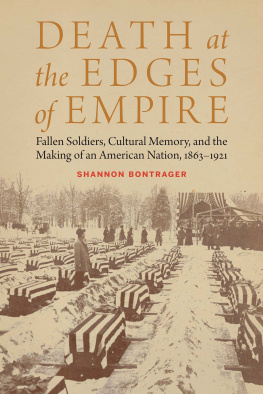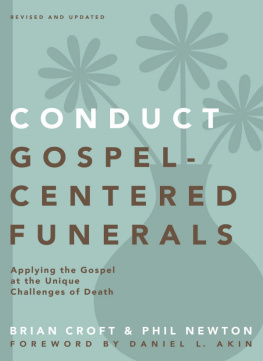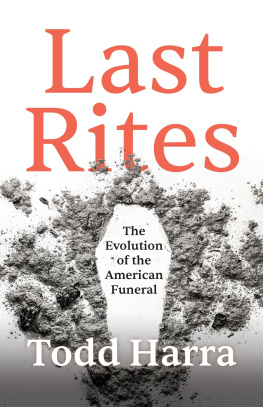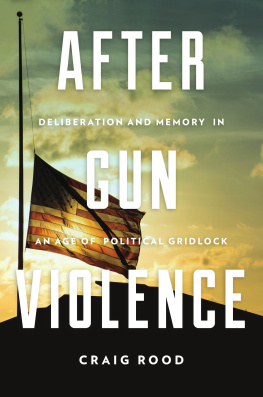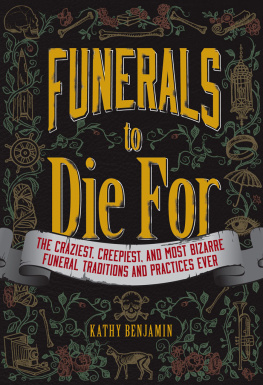Contents
List of Illustrations and Maps
Guide
Pagebreaks of the print version
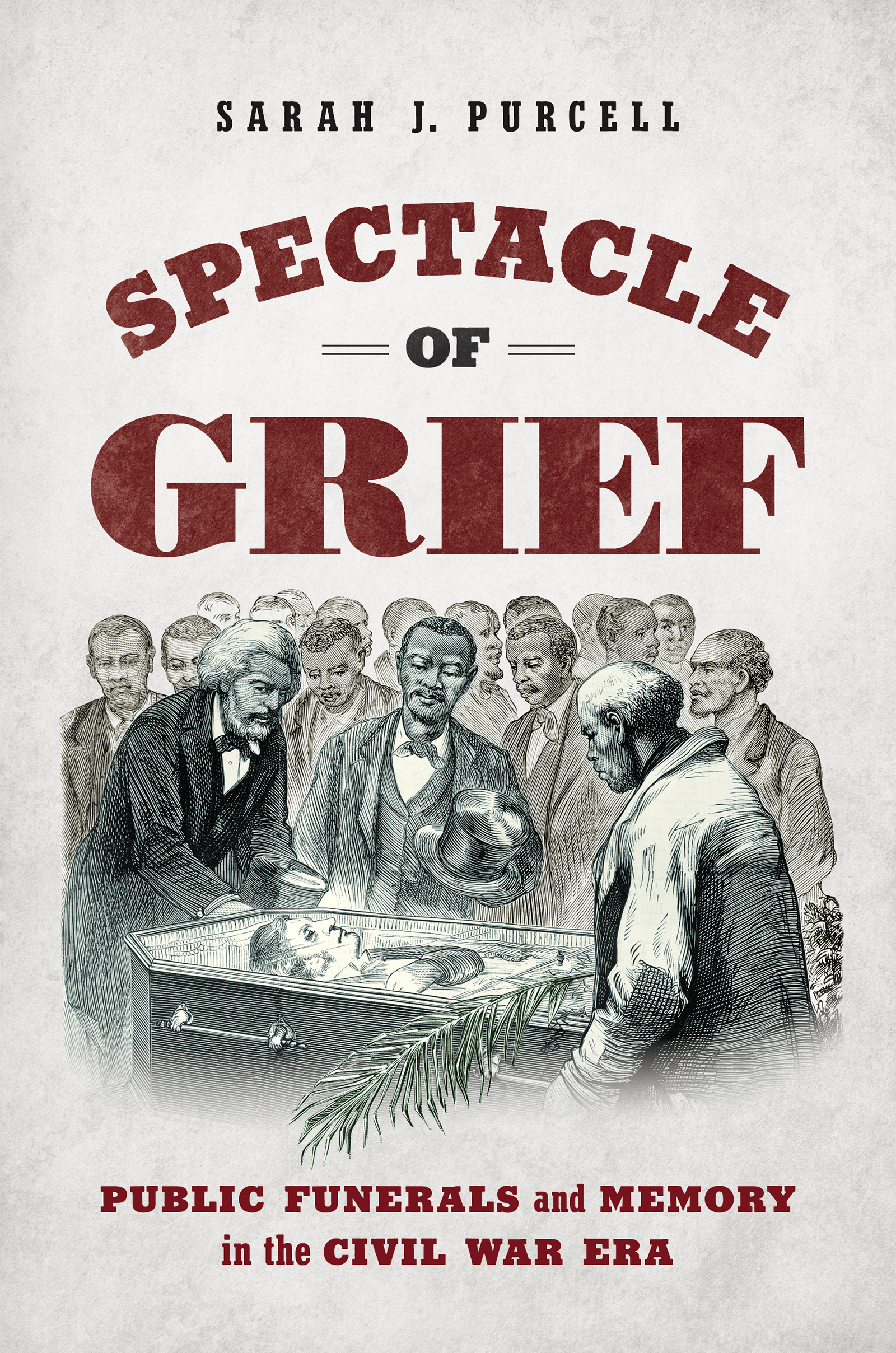
Spectacle of Grief
Civil War America
Peter S. Carmichael, Caroline E. Janney, and Aaron Sheehan-Dean, editors
This landmark series interprets broadly the history and culture of the Civil War era through the long nineteenth century and beyond. Drawing on diverse approaches and methods, the series publishes historical works that explore all aspects of the war, biographies of leading commanders, and tactical and campaign studies, along with select editions of primary sources. Together, these books shed new light on an era that remains central to our understanding of American and world history.
Spectacle of Grief
Public Funerals and Memory in the Civil War Era
SARAH J. PURCELL
The University of North Carolina Press
Chapel Hill
This book was published with the assistance of the Anniversary Fund of the University of North Carolina Press.
2022 Sarah J. Purcell
All rights reserved
Set in Minion Pro by Westchester Publishing Services
Manufactured in the United States of America
The University of North Carolina Press has been a member of the Green Press Initiative since 2003.
Library of Congress Cataloging-in-Publication Data
Names: Purcell, Sarah J., author.
Title: Spectacle of grief : public funerals and memory in the Civil War era / Sarah J. Purcell.
Other titles: Civil War America (Series)
Description: Chapel Hill : University of North Carolina Press, 2022. | Series: Civil War America | Includes bibliographical references and index.
Identifiers: LCCN 2021049358 | ISBN 9781469668321 (cloth ; alk. paper) | ISBN 9781469668338 (pbk. ; alk. paper) | ISBN 9781469668345 (ebook)
Subjects: LCSH: Funeral rites and ceremoniesUnited StatesHistory19th century. | DeathSocial aspectsUnited StatesHistory19th century. | Collective memoryUnited States. | United StatesHistory19th century. | United StatesHistoryCivil War, 1861-1865Public opinion.
Classification: LCC GT3203 .P87 2022 | DDC 393/.93097309034dc23/eng/20211022
LC record available at https://lccn.loc.gov/2021049358
Cover illustration: Detail of Joseph Becker, The Late Senator Sumner. Ceremonies in the CapitolColored People of Washington, Headed by Frederick Douglass, Viewing the Remains, Frank Leslies Illustrated Magazine, March 28, 1874. Courtesy of the Library of Congress Prints and Photographs Division.
Portions of this book were previously published in a different form. Chapter 1 includes material from All That Remains of Henry Clay: Political Funerals and the Tour of Henry Clays Corpse, Commonplace: the Journal of Early American Life, http://commonplace.online/article/remains-of-henry-clay/.
To my family and to my students
Contents
Illustrations and Maps
Illustrations
Maps
Acknowledgments
I extend thanks to everyone I have talked to for more than a decade who managed not to look too distressed when they asked, So, whats your book about? and I answered, Funerals. So many people have aided me in researching and writing this book that a true accounting of my thanks would fill volumes. If I am able to convey even a shred of the gratitude that I feel, it will be remarkable. If I forget to mention someone, please forgive me. It has taken almost an army of people to get me to the finish line of this project.
I have been blessed to have been a faculty member at Grinnell College during the entire duration of this project, and the institution and its people have given me measureless support at every turn. Funds from the Committee for the Support for Faculty Scholarship, the Furbush Faculty Fellowship, the L. F. Parker Endowed Chair in History, and other sources supported my research and writing time. My colleagues in the history department give me strength every day not only to raise my level of teaching but to continue being an engaged scholar and friend. Grinnell College Libraries staff and librarians hold me up and nurture my scholarship. Special thanks must go to Richard Fyffe (gone way too soon), Mark Christel, Chris Jones, Catherine Rod, Julia Bauder, Allison Haack, Kevin Engle, Liz Rodrigues, Rebecca Ciota, Katie Dunn, Sharon Clayton, Leslie Gardner, Kim Gilbert, Karla Harter, Betty Santema, Amy Babb Brown, Micki Behounek, and Chelsea Soderblom. Other amazing Grinnell College colleagues who deserve acknowledgment include Susan Ferrari, Laura Nelson-Lof, Lisa Mulholland, and De Dudley.
Kathy Kamp spent years convincing me I could try GIS technology; then, when she founded Grinnells Data Analysis and Social Inquiry lab, she launched a thousand research ships, the maps in this book among them. For additional help with mapping, Emily Hackman and I would like to thank Justin Erickson, Leif Brottem, Eric Carter, Sarah Sanders, Bonnie Brooks, all the folks at the first Institute for Liberal Arts Digital Scholarship (ILIADs) conference, Katie Walden, and Jeremy Atack (for generously sharing railroad shape files before they were public). For help in formatting the final maps, we also thank Stephanie Peterson for her skill and friendly help with Adobe Illustrator.
At UNC Press, I have received expert editorial advice and patience from the editorial director, Mark Simpson-Vos, and I thank the very able assistant editors Dominique Moore and Mara Garca. Immense thanks go to series editors Aaron Sheehan-Dean and Carline Janney, each of whom in different ways had great influence on this project and my ability to complete it. I also thank the anonymous readers for UNC Press, whose insights made this a richer and more significant work.
I benefited greatly from trips to and fellowships from archives and libraries all around the country. In its early stages, the research for this book was spurred by month-long fellowships at the Newberry Library and the American Antiquarian Society, both (in their own ways) models of scholarly community and support. I would especially like to thank Paul Erickson, Caroline Sloat, Philip Lampi, and Georgia Barnhill for guidance and help at AAS. B. J. Gooch, the special collections librarian at Transylvania University, was also very encouraging in early stages of my research and provided guidance about Henry Clay. At the Massachusetts Historical Society, Conrad Wright and Kate Viens offered direction and encouragements. Thanks also to librarians and archivists at the Virginia Historical Society, the College of William and Mary, the Library of Virginia, the New York Public Library, the Monroe County (NY) Public Library Special Collections, the Peabody Institute Library Archives (Peabody, MA), the Phillips Library at the Peabody Essex Museum, Washington and Lee University, Rice University, the University of Kentucky, the Library of Congress, the National Archives, the Army Medical Museum, the National Library of Medicine, Old Dominion University, the Historical Society of Pennsylvania, the American Philosophical Society, Harvard University, Brown University, the Abraham Lincoln Presidential Museum and Library, and the University of Texas at Austin.
Other scholarly colleagues have encouraged this work, organized panels where I tried out ideas, and provided intellectual support. A faculty-student summer fellowship for the Society for the Historians of the Early American Republic (SHEAR) Mellon seminar got me started on initial ideas for this project and provided research time in Philadelphia. Friends and colleagues from SHEAR have watched this work develop for well over a decade and cheered me on; I have special gratitude for Rosemarie Zagarri, Martha King, Patrick ONeil, Steve Bullock, Catherine Denial, and John Brooke. Thanks also go to Volker Depkat, Megan Kate Nelson, Michael McDonnell, Fitzhugh Brundage, Clare Corbould, Frances Clark, Laura Free, Catherine Kelley, and Marvin Bergman for being so collegial and inspiring.


